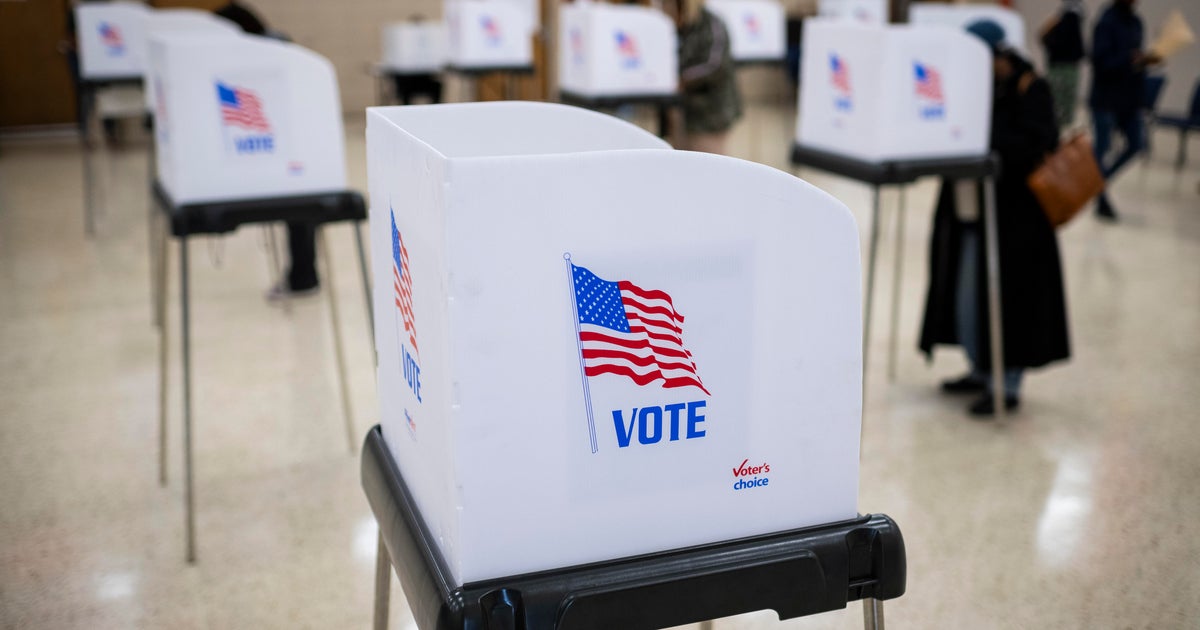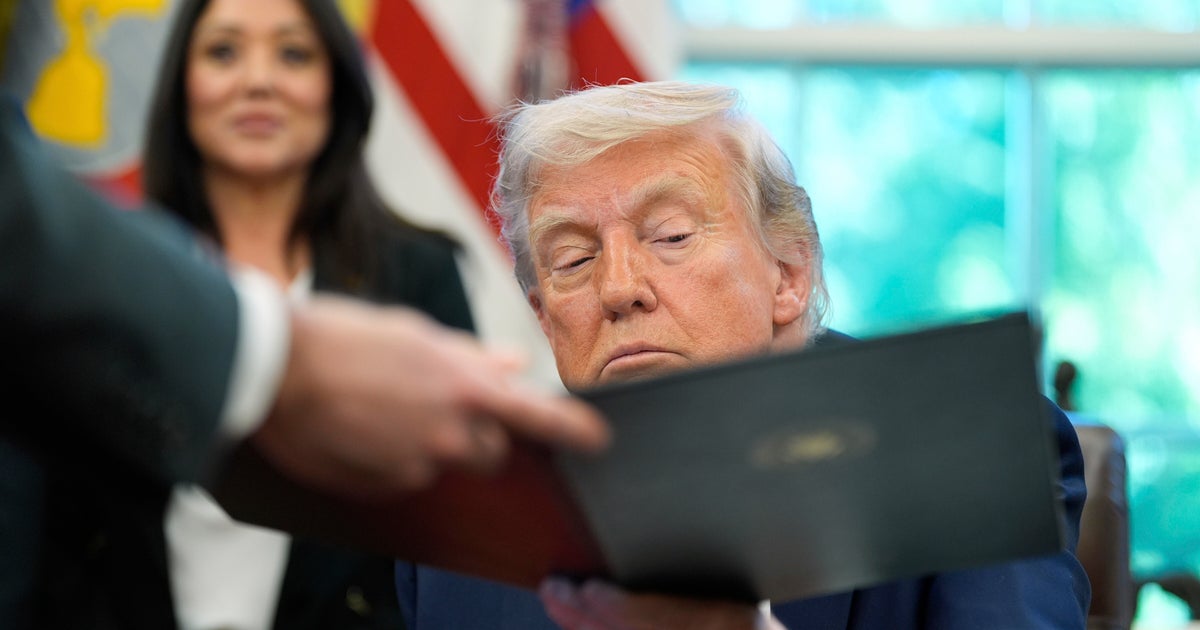What comes next for Trump's "big, beautiful bill": Reconciliation
Washington — Congressional Republicans are forging ahead with the centerpiece legislation of President Trump's first-year agenda, but the road to enacting it will face some complications during the process known as budget reconciliation.
Budget reconciliation allows Congress to bypass the 60-vote threshold typically required to advance a bill in the Senate, granting the party in power the ability to approve major legislation without working across the aisle. But the maneuver, which is the gateway to implementing Mr. Trump's priorities on border security, defense, energy and taxes, comes with limitations entailing weeks or months of work ahead for GOP lawmakers.
How reconciliation works
Under budget reconciliation, lawmakers must first adopt identical budget resolutions in both the Senate and the House. The resolution serves as a blueprint, with instructions to congressional committees to reduce or increase the spending they oversee by a targeted amount.
Senate and House committees then draft legislation reconciling spending with the new budget goals, submitting recommendations to their respective chamber's budget committee. The committees then incorporate the recommendations for the government's spending into a massive legislative package known as an omnibus bill.
House and Senate committees can work separately on the process and pass separate reconciliation bills in each chamber before going to conference, where they negotiate the final version of the measure. But in recent years, the Senate has waited for the House to act first before taking the House-passed package to the Senate floor.
In the House, the reconciliation package requires a simple majority for approval. In the Senate, the reconciliation rules eliminate the need for 60 votes to end debate, so the upper chamber also needs only a simple majority to pass the bill. The Senate parliamentarian must also sign off on the package, however, and settle any disputes over whether a provision has direct budgetary consequences — a requirement known as the Byrd rule.
Once it's passed by both the House and Senate, the legislation is signed into law by the president.
What's next in Congress?
Both the House and Senate adopted a budget resolution before leaving town for a two-week recess in April. The resolution was able to overcome considerable opposition from fiscal hawks threatening to tank it in the House. But after assurances that the Senate would seek deeper spending cuts than outlined in the resolution, enough members agreed to allow the process to move forward.
Committees are set to begin the mark-ups when they return from recess, setting a May 9 deadline to complete their committee work, with an ambitious goal of getting the legislation to the president's desk around Memorial Day.
The plan is a key step toward implementing the president's priorities on border security, defense, energy and taxes. The legislation aims to extend the 2017 tax cuts, along with authorizing additional tax cuts, while raising the debt ceiling by as much as $5 trillion, in what Mr. Trump has dubbed a "big, beautiful bill."
House and Senate Republicans are also working to reconcile differences in their path forward. The Senate set low minimum floors for spending cuts for several committees, at a total of just around $4 billion, though they expect to find far more. At the same time, the budget resolution outlines that House committees must cut at least $1.5 trillion in spending.
Here are the areas where spending would increase under the House plan:
- Up to $4.5 trillion for the Ways and Means Committee
- Up to $110 billion in for the Judiciary Committee
- Up to $100 billion for the Armed Services Committee
- Up to $90 billion for the Homeland Security Committee
Here are the House committees that are tasked with finding the cuts:
- At least $880 billion by the Energy and Commerce Committee
- At least $330 billion by the Education and Workforce Committee
- At least $230 billion by the Agriculture Committee
- At least $50 billion by the Oversight and Government Reform Committee
- At least $10 billion by the Transportation and Infrastructure Committee
- At least $1 billion by the Financial Services Committee
- At least $1 billion by the Natural Resources Committee
Here are the areas where spending would increase under the Senate plan:
- Up to $1.5 trillion for the Finance Committee
- Up to $175 billion for the Judiciary Committee
- Up to $175 billion for the Homeland Security and Governmental Affairs Committee
- Up to $150 billion for the Armed Services Committee
- Up to $20 billion for the Commerce, Science and Transportation Committee
- Up to $1 billion for the Environment and Public Works Committee
Here are the Senate committees that are tasked with finding the cuts:
- At least $1 billion by the Agriculture, Nutrition and Forestry Committee
- At least $1 billion by the Banking, Housing and Urban Affairs Committee
- At least $1 billion by the Health, Education, Labor and Pensions Committee
- At least $1 billion by the Energy and Natural Resources Committee
"Current policy" versus "current law" and the $3.8 trillion gap between them
Another area where the House and Senate have differed is on an accounting method known as the "current policy" baseline that would make an extension of the Trump tax cuts appear to cost nothing.
The Senate's plan relies on the budget scoring method, which assumes that continuing current policies incurs no cost. Under that baseline, the $3.8 trillion it would cost to extend the Trump tax cuts would not be counted.
The 2017 Trump tax cuts are set to expire this year and were originally approved using "current law" scoring, which treats the renewal of expiring policies as new legislation. The House budget plan relied on the current law baseline, allocating $4.5 trillion for tax cuts.
The strategy could be challenged, and prompt a ruling by the Senate parliamentarian. Senate Republicans forged ahead with their budget resolutionlast month without securing the parliamentarian's approval, arguing that the decision was the budget chairman's to make.
What's happening with Medicaid?
Opponents of the resolution have warned that the proposed cuts within the House plan implicate Medicaid. And the Congressional Budget Office backed up the concerns in an analysis released last month, which found that the budget goals outlined in the House GOP plan could not be reached without reducing spending on Medicaid, clashing with commitments from Republicans not to cut the popular entitlement program.
As the resolution shows, it's the Energy and Commerce Committee, which oversees Medicaid, that has to identify the biggest spending cuts — at least $880 billion over the next decade. Two House Democrats asked the CBO for the projected mandatory spending on programs under the committee's jurisdiction, excluding Medicare, which offers health coverage for seniors. Medicaid provides government-sponsored health care for low-income Americans, with costs shared between the federal government and the states at varying levels.
CBO found that Medicaid accounts for 93% of all remaining non-Medicare mandatory spending, with $581 billion going to other programs. That means the committee couldn't meet its $880 billion target without touching the program.
GOP leaders have not proposed cutting Medicare, leaving Medicaid as the source of potential cuts, though they've stressed that Medicaid isn't specifically mentioned in the budget resolution and pledged that benefits would not be cut.
Instead, House Republican leadership has said it plans to remove "fraud, waste and abuse" within the program, and many members support work requirements that could limit eligibility for benefits.
Democrats have widely cast doubt on the GOP claims. And House Minority Leader Hakeem Jeffries argued earlier this year that "Republicans are lying to the American people about Medicaid."
"Everybody knows who has had any connection to the congressional budget that if you are directing the Energy and Commerce Committee to find up to $880 billion, if not more in spending cuts, that means Medicaid," Jeffries said, adding that there is nothing that House Democrats "would like better than for Republicans to prove us wrong."
When has budget reconciliation been used before?
Nearly two dozen budget reconciliation measures have been enacted since they were first used in 1980, according to the Congressional Research Service.
In recent years, the maneuver has been used a handful of times. Democrats in the majority approved two major packages under budget reconciliation during the Biden administration — a pandemic aid package and the Inflation Reduction Act. And in 2017, Republicans in the majority approved tax cuts under the Tax Cuts and Jobs Act in the first Trump administration. Republicans also tried — and failed — to use the reconciliation process to repeal portions of the Affordable Care Act during Mr. Trump's first term.




